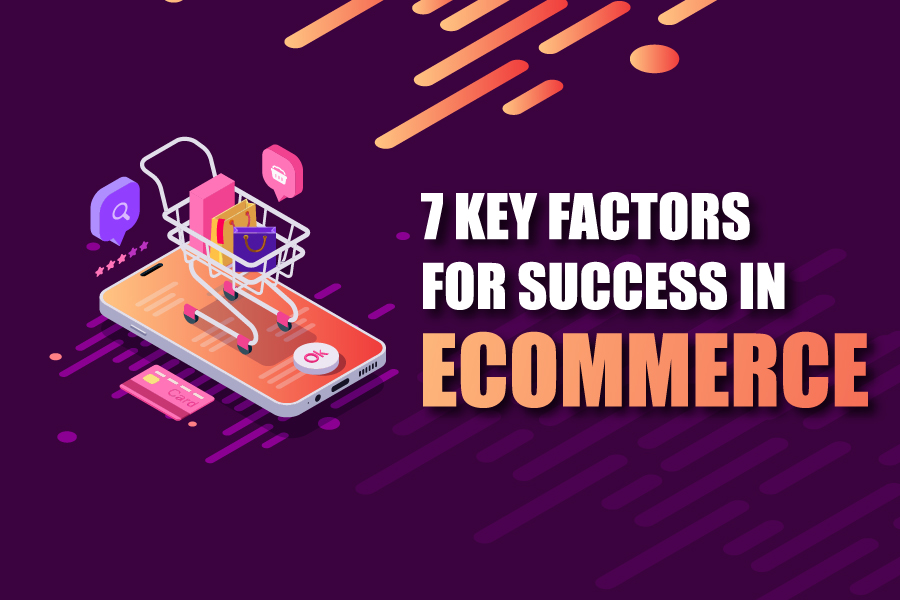- Introduction
- Factors for a Successful E-Commerce Website
- Responsive Design
- Load Time
- SEO Friendly
- Personalised user experience
- Branding
- Security
- Easy Checkout
- Conclusion
Introduction
Businesses have shifted focus to the digital world to build a successful business and generate more money. The trend of eCommerce websites is increasing fast and becoming famous worldwide nowadays. According to surveys, 50-60% of business contributors directly result from eCommerce development and design.
E-commerce websites improve a company’s image by allowing customers to shop from anywhere. The best feature of an e-commerce website is that it allows you to compare products quickly. Users can order products and services online with only a few clicks on any device they like.
Many Magento hosting providers provide the features like customization, responsive interface, and compatibility that you can use to build a successful online store.
Factors for a Successful E-Commerce Website
A few vital factors for a beautiful, attractive, and effective Ecommerce Website are listed below.
- Responsive Design
- Load Time
- SEO Friendly
- Personalised user experience
- Branding
- Security
- Easy Checkout
These seven important factors for a successful e-commerce website will help you build a competitive online store.
Let’s explore these factors more.
Responsive Design
People nowadays want to make purchases using their cellphones or any other device. More than half of individuals prefer to buy on mobile devices rather than desktop PCs. You’ll need a responsive design that works on any platform or device. It makes the website user-friendly, increasing online sales.
Load Time
It’s today’s reality that if your site takes more than three seconds to load, you could lose 40% of your customers because people nowadays have grown impatient. A slow site will not only turn away customers, but it can also affect your Google search rankings. It takes only a few seconds to wow your visitors and convert them into paying customers. Make sure that your website loads quickly on both mobile and desktop platforms. Use a program like GTmetrix, PageSpeedInsights, or other testing tools to test load times before launching your eCommerce site.
SEO Friendly
Not everyone interested in your product will go straight to your website. Data reveals that 46% of shoppers begin the purchasing process using a search engine like Google. They’ll buy from one of your competitors if your eCommerce site isn’t one of the top results. That is why you must concentrate your efforts on search engine optimization. Make every effort to rank at the top of Google for queries relating to the products or services your company offers.
Personalised user experience
According to a study by Cloud IQ, 69 percent of customers want, and two-thirds expect, a personalised experience. Regrettably, just 40% of brands provide one. Giving a personalised experience constantly might help boost client happiness and retention. You can provide clients with the things they genuinely need by personalising their buying experience. As a result, excellent e-commerce customer service can significantly impact the total consumer experience.
Social Media
Who doesn’t use social media nowadays? According to the Digital 2022 Global Overview Report, people using social media exceed 4.6 billion. Almost all of your potential consumers are likely to have a social media account, whether it’s on Facebook, Twitter, LinkedIn, or another platform.
Your e-commerce company’s internet exposure can be enhanced by using social media. You could be losing out on a lot of money if you don’t use social sharing buttons on your website. Implementing a social media plan you should think about if you want to establish a long-term business.
Security
Practically all websites should now have an SSL certificate loaded to encrypt data coming into and out of the browser. A clear privacy policy is also required to notify users about how their information is used on the site and by the company.
Customers will always double-check the security of their personal information, such as credit card information. As a result, ensuring that your eCommerce website’s transactions are safe and secure is crucial to its success. Authenticate that your website has a good and current SSL certificate so that customers may conduct secure transactions.
Easy Checkout.
According to a recent survey, 60% of customers abandon their shopping carts before checking out because of the slow and challenging check-out and payment process. The solution to this problem is a one-page check-out. If you ask customers to create an account before purchasing, do so first. Allow them to complete the purchasing process before directing them to an account setup page. Last but not least, make sure all fields in your forms are clearly labelled to help purchasers avoid irritating error warnings; if customers feel like they’re being led around in circles, they’ll quickly abandon the process.
Conclusion
It is not easy to run a successful eCommerce website. Fortunately, there are few things you can do to increase your chances of increasing sales tensionmatleyaar.com and keeping clients coming back for more.
Follow this guide and grow your online store and ask if you have any queries or questions; we are always available to help you out.





